The Influence of the Elemental Composition, Crystal Structure, and Grain Structure of the Ferro-Piezoceramics of Various Degrees of the Ferro-Hardness on the Stability of the Polarized State
Abstract
:1. Introduction
2. Objects, Methods of Obtaining, and Studying the FPCM Samples
3. Results
4. Conclusions
- The different behavior of the piezomodule d33 in the materials of various degrees of ferro-hardness under the influence of the temperature in three schemes has been revealed. The highest rate of the change in the piezomodule, regardless of the measurement modes, is observed in the FS-materials due to the mobility of the domain structure, which readily responds to the external influences, including temperature.
- The observed conservation of the piezoactive state in the FS-materials above the Curie temperature is associated with the relaxation nature of the change in their properties, the existence of a region of the fuzzy symmetry (noncubic phase) in them above the Curie temperature, and the increased inertia of the system.
- The interpretation of the obtained experimental results is given taking into account the influence of the elemental composition, crystal structure, and grain structure of the ferropiezoceramics of various degrees of the ferro-hardness on the stability of the polarized state.
Author Contributions
Funding
Institutional Review Board Statement
Informed Consent Statement
Data Availability Statement
Acknowledgments
Conflicts of Interest
Appendix A

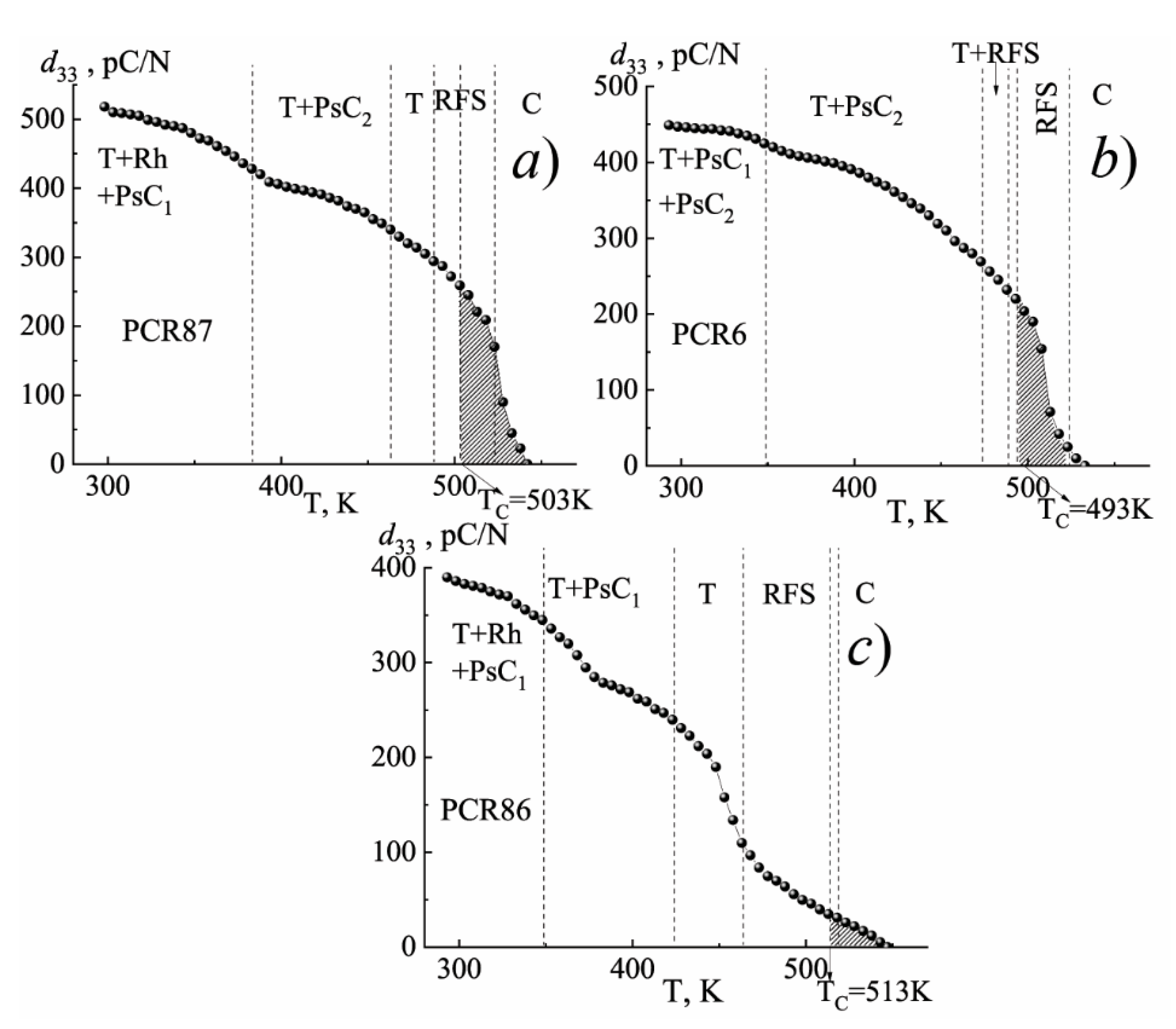

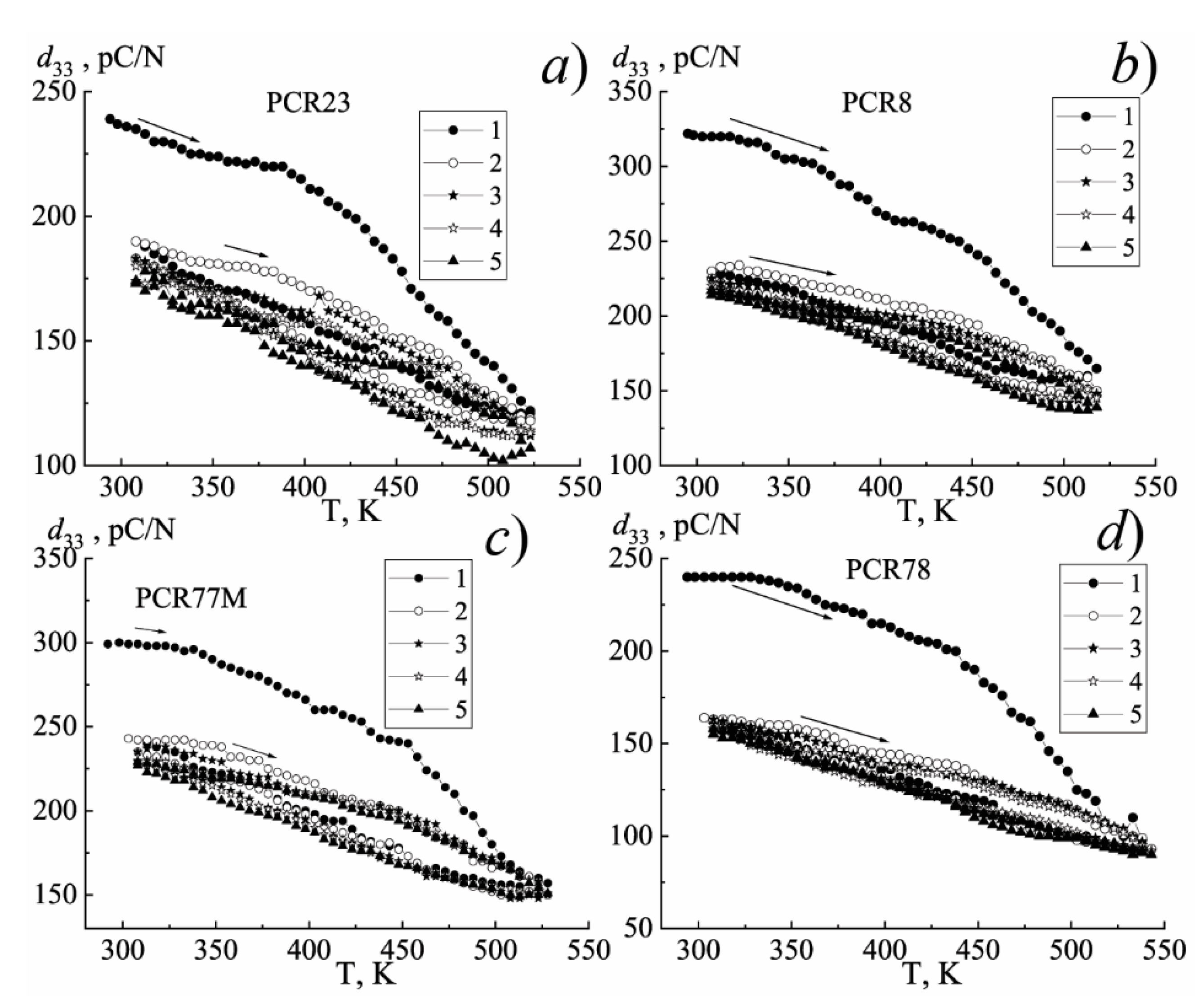

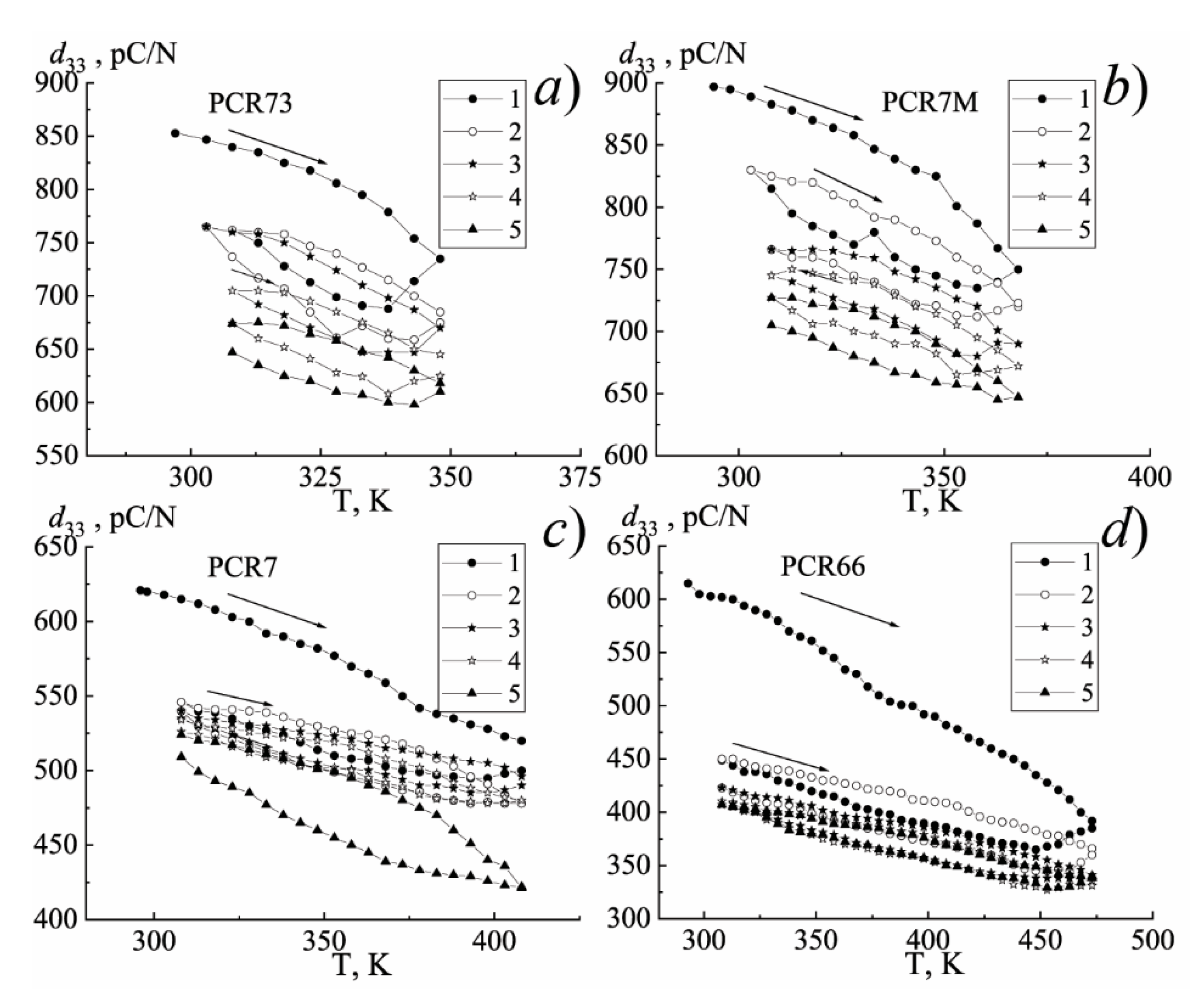
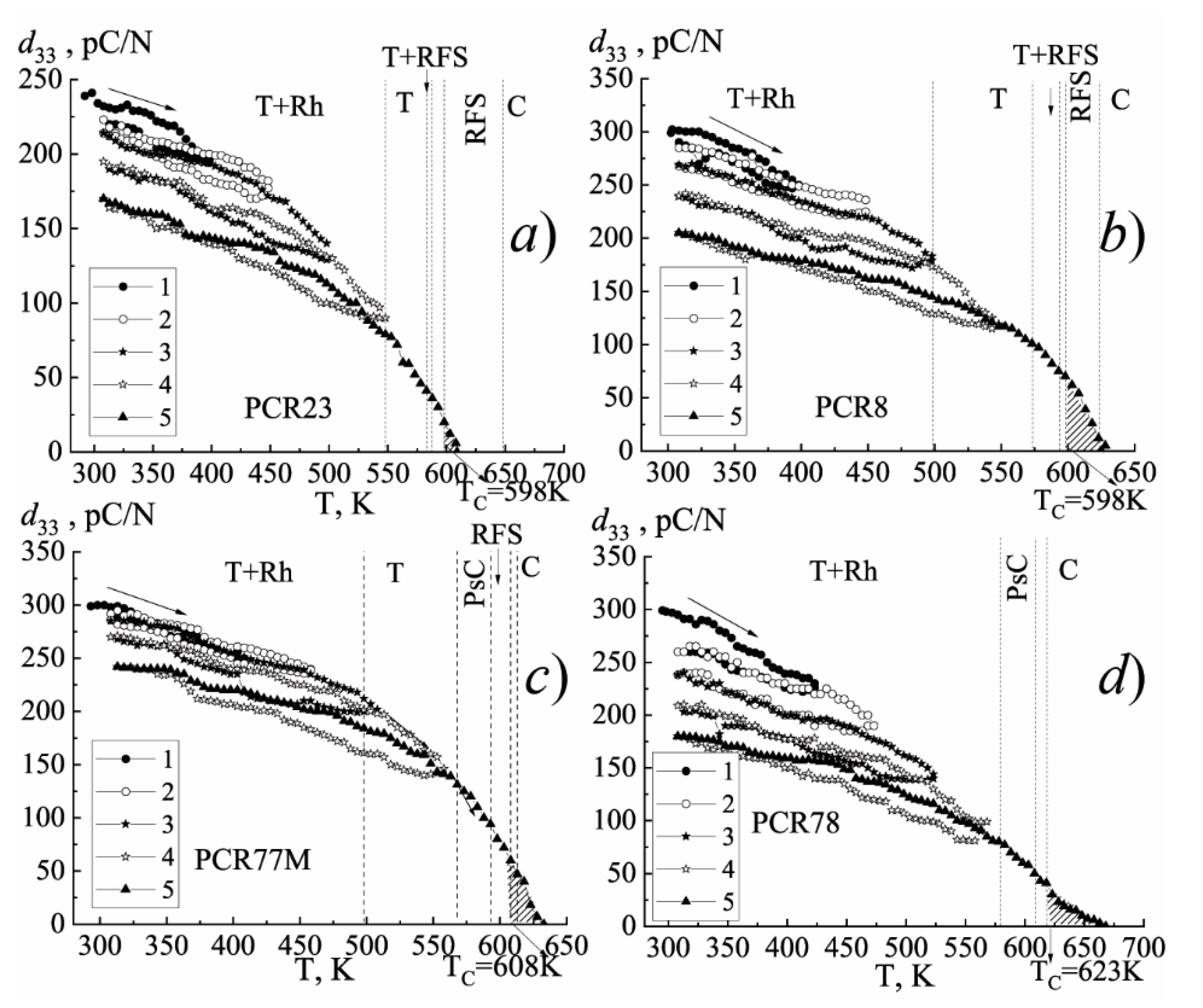
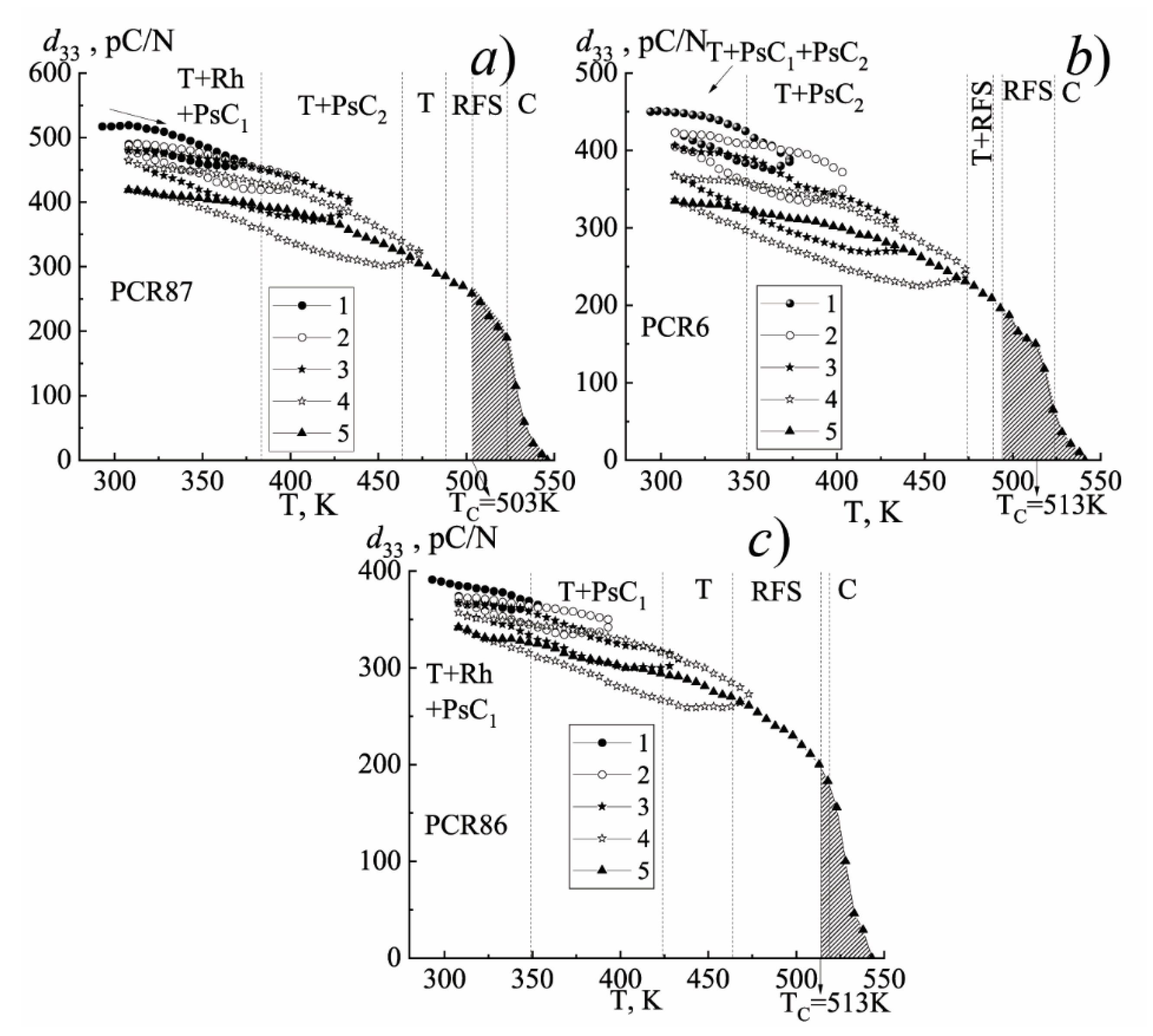

References
- Dantsiger, A.Y.; Reznichenko, L.A.; Razumovskaya, O.N.; Sakhnenko, V.P.; Naumov, A. Fifty years investigations and developments to create ferro-piezoceramic materials. Proc. Dielectr. Ceram. Mater. 1999, 100, 13–21. [Google Scholar]
- Dantsiger, A.Y.; Razumovskata, O.N.; Reznitchenko, L.A.; Grineva, L.D.; Dudkina, S.I.; Gavrilyatchenko, S.V.; Dergunova, N.V. High-efficiency ferro-piezoceramic PCR-type materials for various applications. In Proceedings of the 1994 IEEE International Symposium on Applications of Ferroelectrics, University Park, PA, USA, 7–10 August 1994; pp. 175–177. [Google Scholar] [CrossRef]
- Dudkina, S.I.; Shilkina, L.A.; Reznichenko, L.A. Features of the technology for producing multicomponent ferropiezoelectric materials. J. Phys. Conf. Ser. 2021, 1967, 012003. [Google Scholar] [CrossRef]
- Reznichenko, L.A.; Verbenko, I.A.; Shilkina, L.A.; Pavlenko, A.V.; Dudkina, S.I.; Andryushina, I.N.; Andryushin, K.P.; Abubakarov, A.G.; Krasnyakova, T.V. Binary, Ternary and Four-Component Systems Based on Sodium Niobate: Phase Diagrams of States, the Role of the Number of Components and Defectiveness in the Formation of the Properties. In International Conference on Physics and Mechanics of New Materials and Their Applications; Springer: Cham, Switzerland, 2018; Volume 207, pp. 3–23. [Google Scholar]
- Andryushin, K.P.; Dudkina, S.I.; Shilkina, L.A.; Andryushina, I.N.; Rudskiy, D.I.; Verbenko, I.A.; Reznichenko, L.A. Multicomponent complex oxide media-the basics of the functional materials for electronic engineering: The selection of the promising compositions for assessing the ferrohardness. J. Phys. Conf. Ser. 2021, 1942, 12016. [Google Scholar] [CrossRef]
- Han, J.S.; Gal, C.W.; Park, J.M.; Park, S.J. Powder injection molding of PNN-PMN-PZN doped low temperature sintering PZT ceramics. J. Manuf. Processes 2017, 28, 235–242. [Google Scholar] [CrossRef]
- Wang, K.; Zhu, X.; Zhang, Y.; Zhu, J. Low temperature synthesis and enhanced electrical properties of PZN-PNN-PZT piezoelectric ceramics with the addition of Li2CO3. J. Mater. Sci. Mater. Electron. 2017, 28, 15512–15518. [Google Scholar] [CrossRef]
- Sun, Q.; Liu, T. Effects of dopants on properties of PZN-PSN-PMN-PZT ceramics. J. Wuhan Univ. Technol.-Mater. Sci. Ed. 2005, 20, 1–3. [Google Scholar] [CrossRef]
- Guo, F.; Yang, C.; Zhou, H.; Dong, S.; Fang, P.; Wang, J.; Du, J.; Long, W.; Li, X.; Yang, B.; et al. Optimized piezoelectric properties and temperature stability in PSN-PMN-PT by adjusting the phase structure and grain size. J. Am. Ceram. Soc. 2021, 104, 6254–6265. [Google Scholar] [CrossRef]
- Zhou, H.; Yang, S.; Xi, Z.; Dong, S.; Guo, F.; Long, W.; Li, X.; Fang, P.; Dai, Z. Enhanced thermal stability and large piezoelectric properties of Sm-doped Pb(Sc1/2Nb1/2)O3–Pb(Mg1/3Nb2/3)O3–PbTiO3 multifunctional ceramics. J. Mater. Sci. 2021, 56, 12121–12131. [Google Scholar] [CrossRef]
- Wei, F.; Zheng, D.Y.; Peng, Z.H.; Yang, L.; Zhu, H.W.; Zhou, T. The effect of dispersant on the properties PSN-PMS-PNN-PZT piezoelectric ceramics. In IOP Conference Series: Earth and Environmental Science; IOP Publishing: Bristol, UK, 2018; Volume 186, p. 012063. [Google Scholar] [CrossRef]
- Kiyoshi, O. Ceramic Engineering for Dielectrics; Gakkensha: Tokyo, Japan, 1969. [Google Scholar]
- Fesenko, E.G. The Perovskite Family and Ferroelectricity; Atomizdat: Moscow, Russia, 1972; (In Russian: Semejstvo Perovskita I Segnetoehlektrichestvo). [Google Scholar]
- Dantsiger, A.Y.; Reznitchenko, L.A.; Dudkina, S.I.; Razumovskaya, O.N.; Shilkina, L.A. Correlation between the microstructure of ferroelectric ceramics and their chemical and phase composition, the degree of perfection of the crystal structure and the preparation conditions. Ferroelectrics 1998, 214, 255–259. [Google Scholar] [CrossRef]
- Zhang, J.; Liu, L.; Bokov, A.A.; Zhang, N.; Wang, D.; Ye, Z.G.; Jia, C.L. Compositional ordering in relaxor ferroelectric Pb(BB′) O3: Nearest neighbor approach. Phys. Rev. B 2021, 103, 054201. [Google Scholar] [CrossRef]
- Svitelskiy, O.; Toulouse, J.; Yong, G.; Ye, Z.G. Polarized Raman study of the phonon dynamics in Pb(Mg1/3Nb2/3)O3 crystal. Phys. Rev. B—Condens. Matter Mater. Phys. 2003, 68, 104107. [Google Scholar] [CrossRef] [Green Version]
- Hirota, K.; Ye, Z.G.; Wakimoto, S.; Gehring, P.M.; Shirane, G. Neutron diffuse scattering from polar nanoregions in the relaxor Pb(Mg1/3Nb1/3)O3. Phys. Rev. B—Condens. Matter Mater. Phys. 2002, 65, 104105. [Google Scholar] [CrossRef] [Green Version]
- Bursill, L.A.; Qian, H.; Peng, J.L.; Fan, X.D. Observation and analysis of nanodomain textures in the dielectric relaxor lead magnesium niobite. Phys. B Phys. Condens. Matter 1995, 216, 1–23. [Google Scholar] [CrossRef]
- Bokov, A.A.; Ye, Z.G. Recent progress in relaxor ferroelectrics with perovskite structure. J. Mater. Sci. 2006, 41, 31–52. [Google Scholar] [CrossRef]
- Fan, H.J.; Kuok, M.H.; Ng, S.C.; Yasuda, N.; Ohwa, H.; Iwata, M.; Orihara, H.; Ishibashi, Y. Brillouin and dielectric studies of the phase transition in the relaxor ferroelectric Pb(Ni1/3Nb2/3)O3. J. Appl. Phys. 2002, 91, 2262–2266. [Google Scholar] [CrossRef]
- Vezzoli, G.C. Electrical properties of NbO2 and Nb2O5 at elevated temperature in air and flowing argon. Phys. Rev. B 1982, 26, 3954–3957. [Google Scholar] [CrossRef]
- Boonlakhorn, J.; Chanlek, N.; Srepusharawoot, P.; Thongbai, P. Improved dielectric properties of CaCu3−xSnxTi4O12 ceramics with high permittivity and reduced loss tangent. J. Mater. Sci. Mater. Electron. 2020, 31, 15599–15607. [Google Scholar] [CrossRef]
- Levin, I.; Krayzman, V.; Vanderah, T.A.; Tomczyk, M.; Wu, H.; Tucker, M.G.; Playford, H.Y.; Woicik, J.C.; Dennis, C.L.; Vilarinho, P.M. Oxygen-storage behavior and local structure in Ti-substituted YMnO3. J. Solid State Chem. 2017, 246, 29–41. [Google Scholar] [CrossRef] [Green Version]
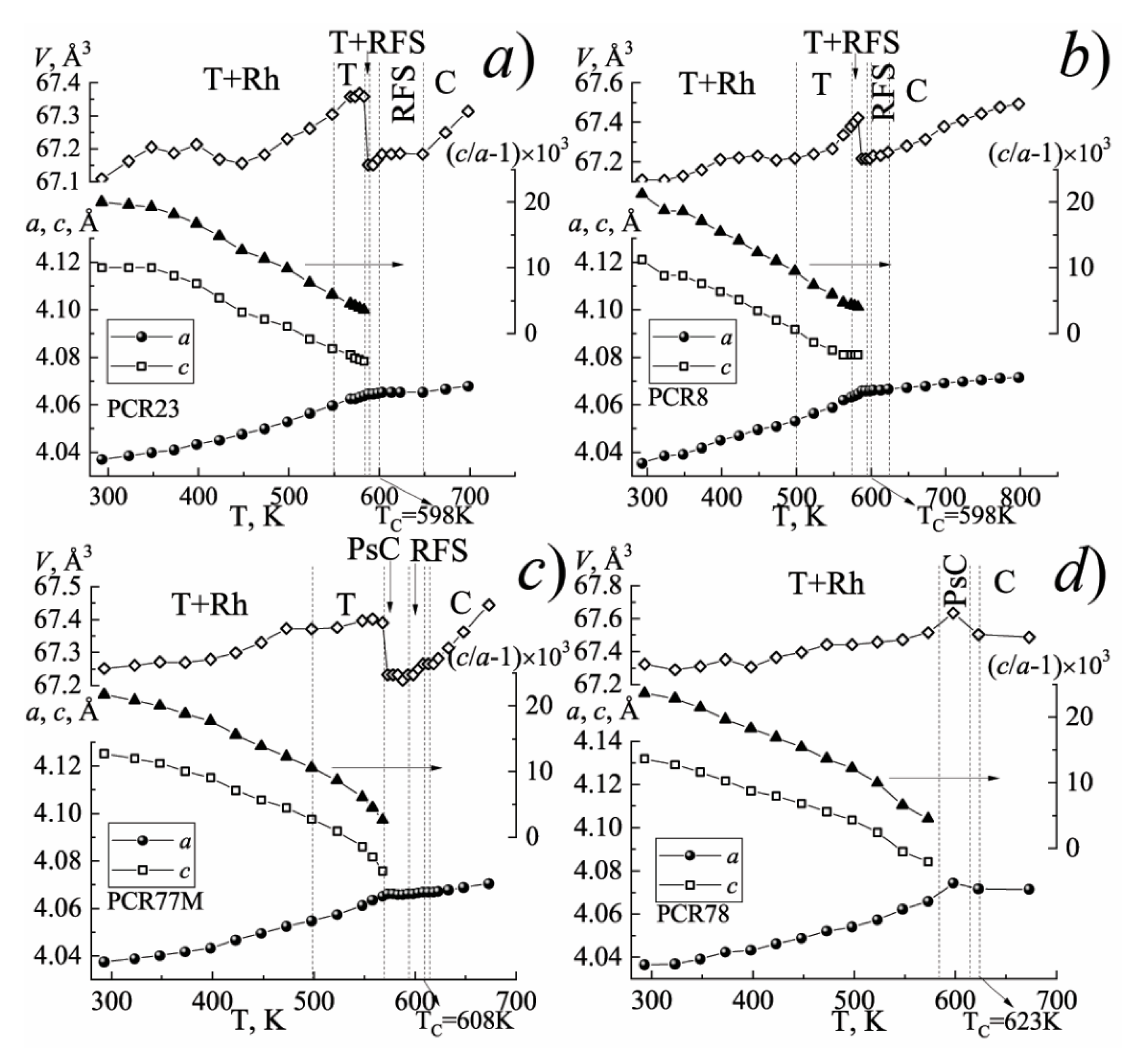


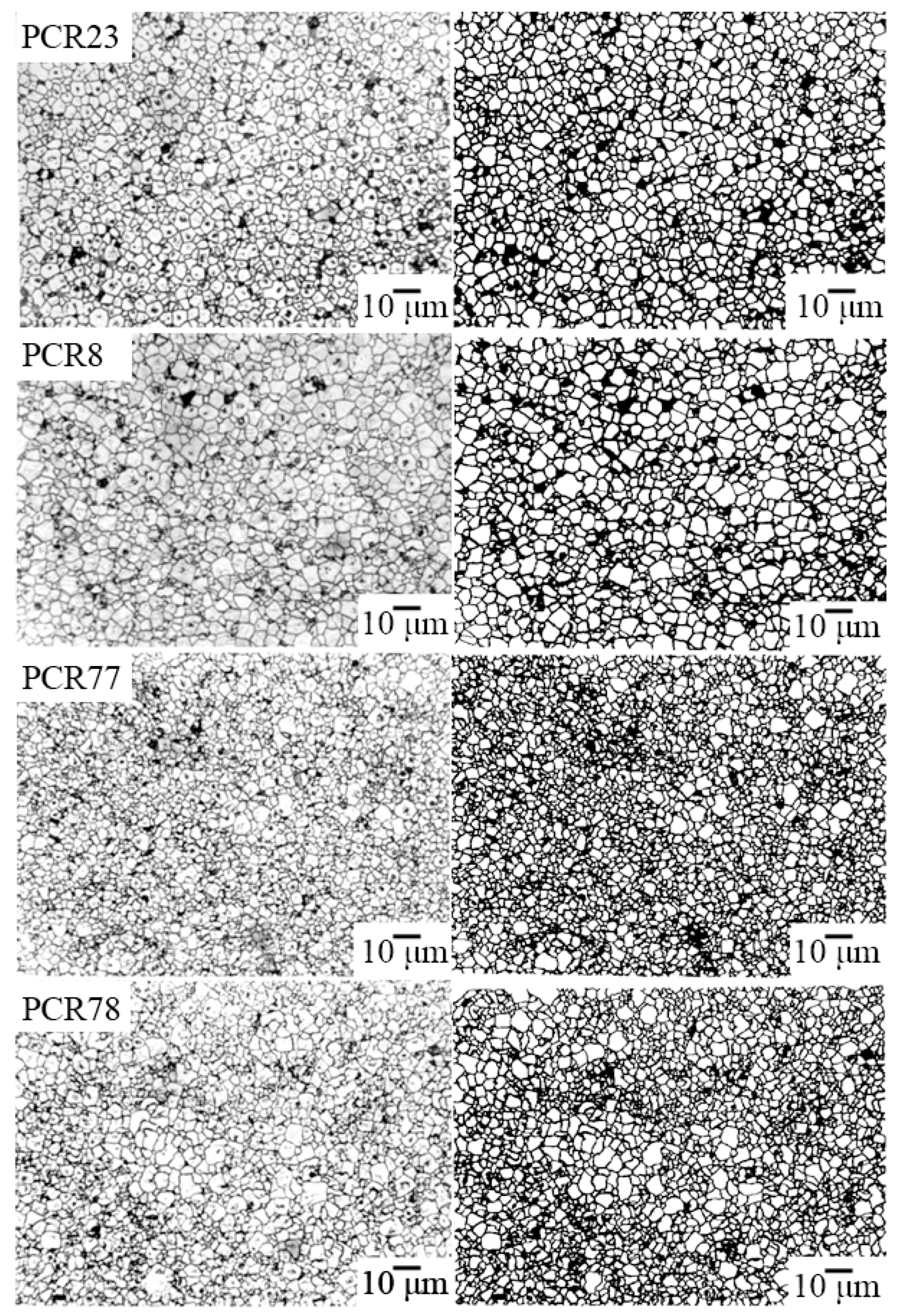
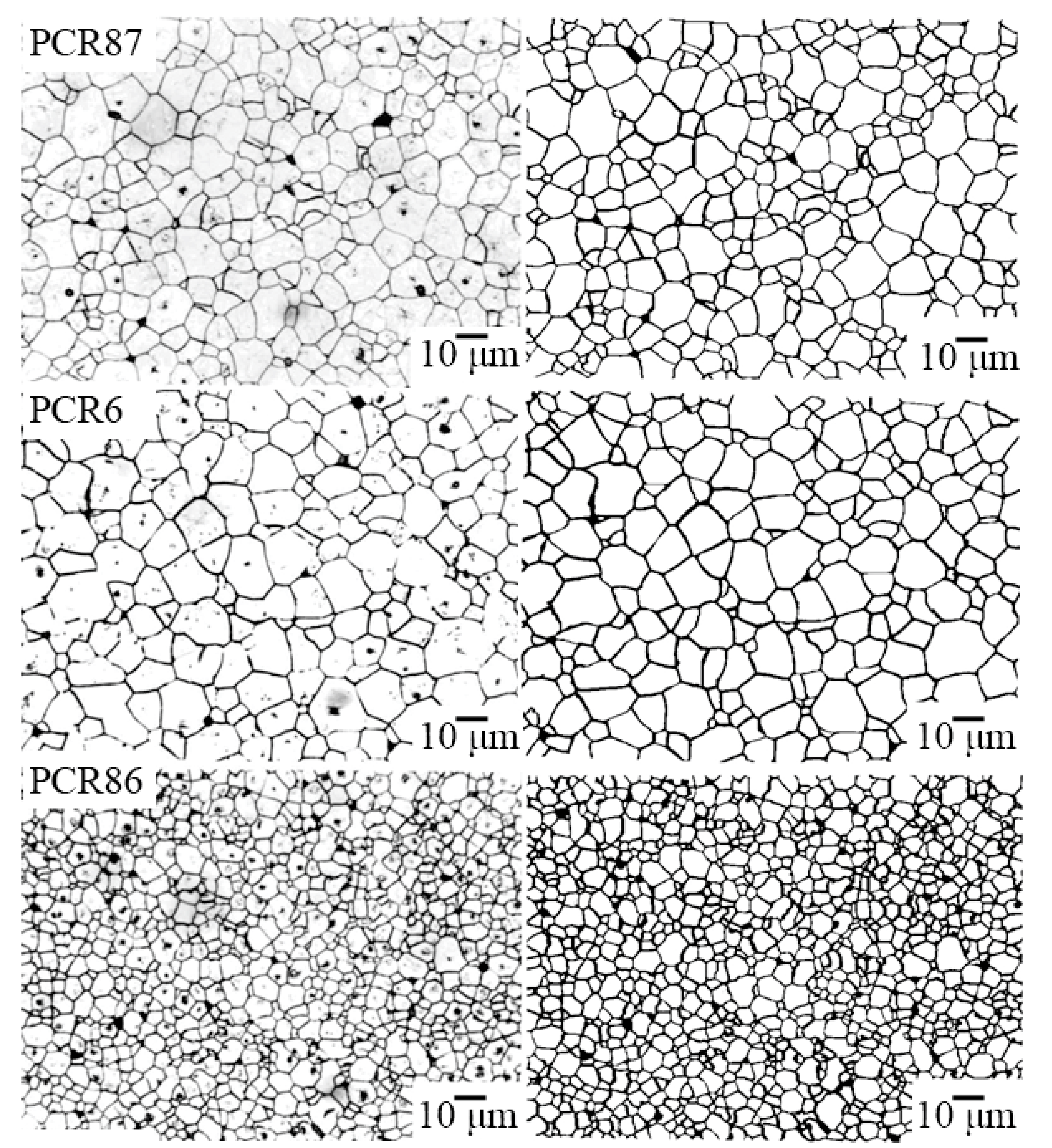




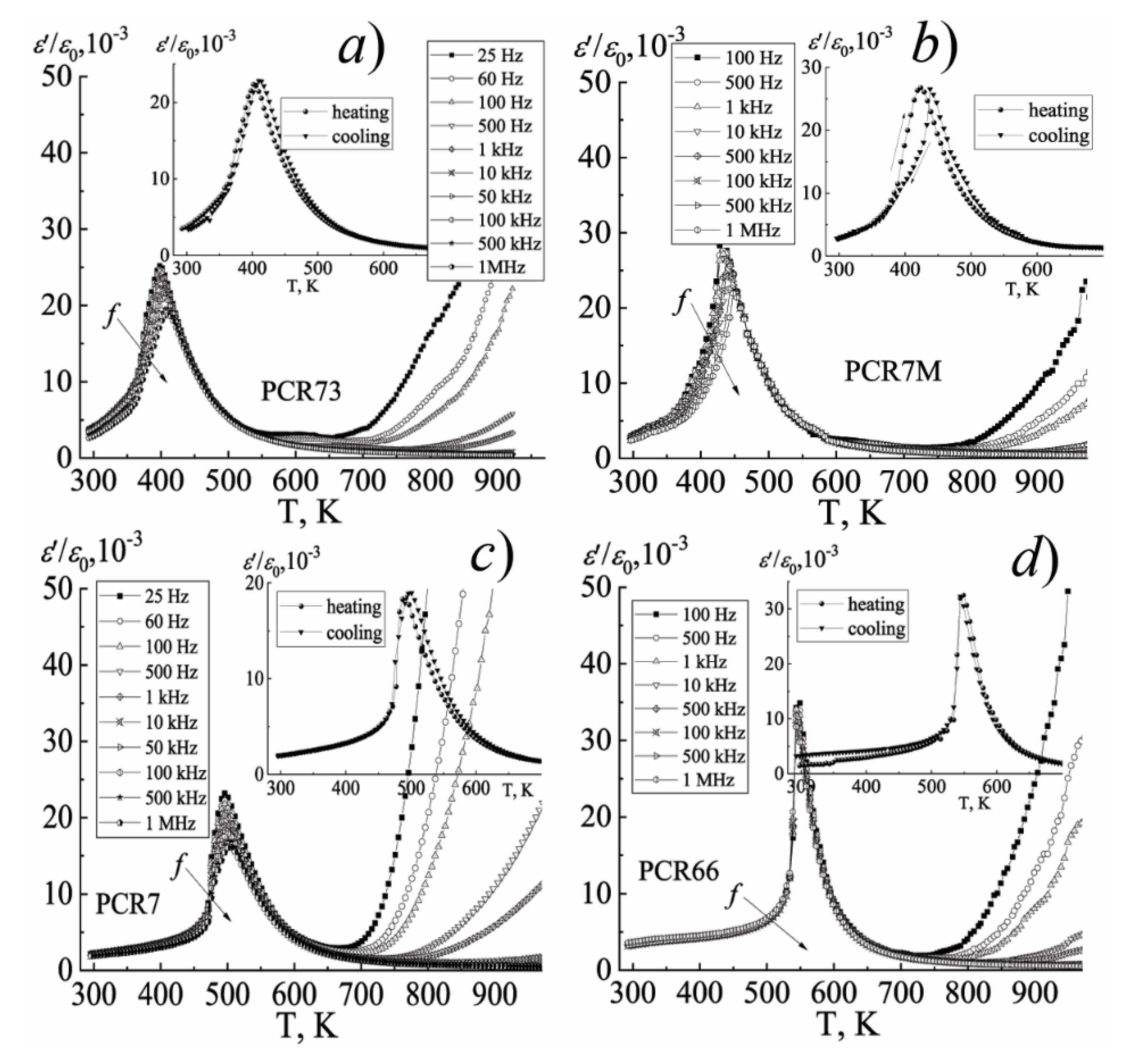


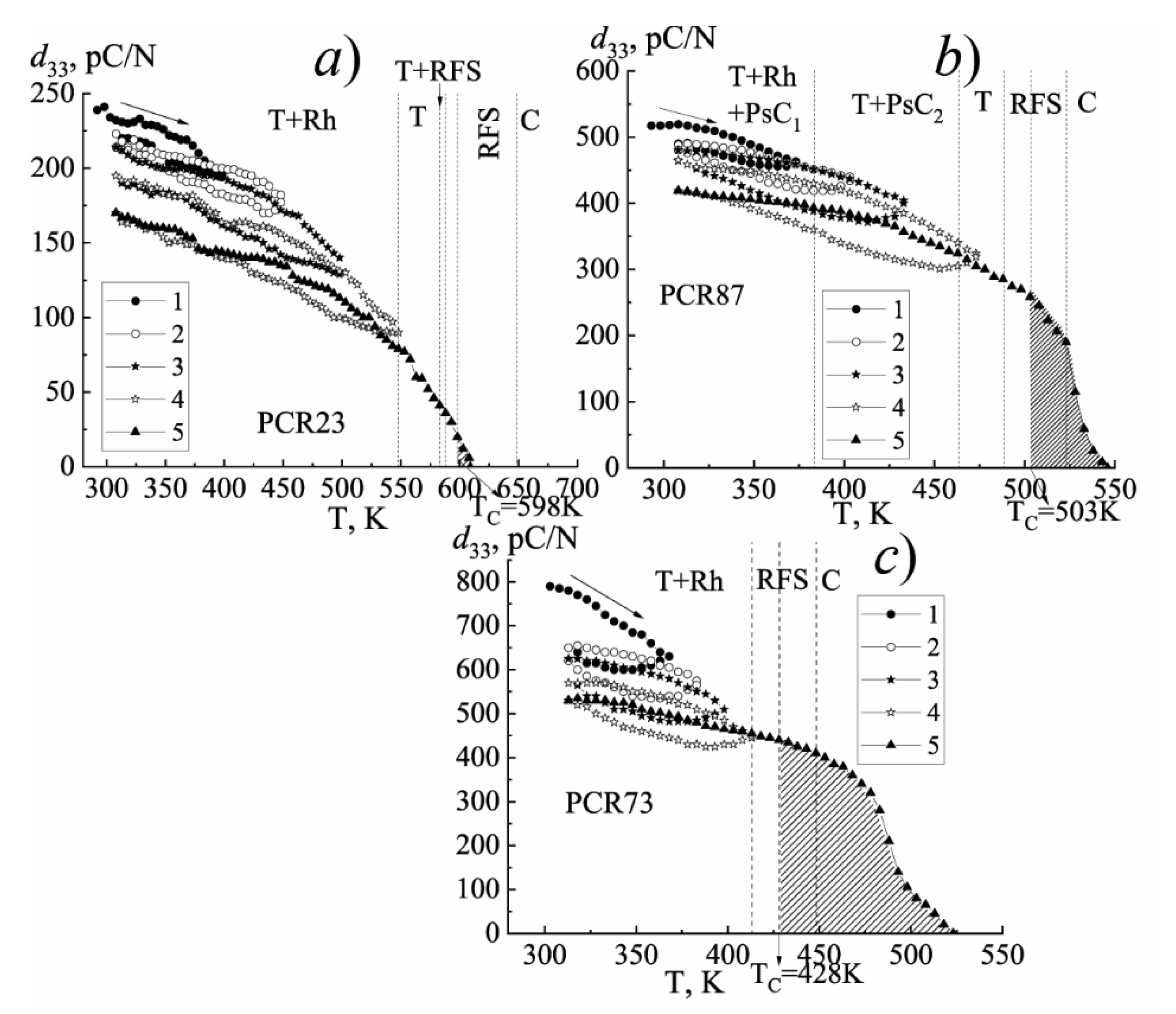
Publisher’s Note: MDPI stays neutral with regard to jurisdictional claims in published maps and institutional affiliations. |
© 2022 by the authors. Licensee MDPI, Basel, Switzerland. This article is an open access article distributed under the terms and conditions of the Creative Commons Attribution (CC BY) license (https://creativecommons.org/licenses/by/4.0/).
Share and Cite
Andryushin, K.; Dudkina, S.; Sahoo, S.; Shilkina, L.; Alyoshin, V.; Triger, E.; Andryushina, I.; Verbenko, I.; Rudskiy, D.; Rudskaya, A.; et al. The Influence of the Elemental Composition, Crystal Structure, and Grain Structure of the Ferro-Piezoceramics of Various Degrees of the Ferro-Hardness on the Stability of the Polarized State. Materials 2022, 15, 2118. https://doi.org/10.3390/ma15062118
Andryushin K, Dudkina S, Sahoo S, Shilkina L, Alyoshin V, Triger E, Andryushina I, Verbenko I, Rudskiy D, Rudskaya A, et al. The Influence of the Elemental Composition, Crystal Structure, and Grain Structure of the Ferro-Piezoceramics of Various Degrees of the Ferro-Hardness on the Stability of the Polarized State. Materials. 2022; 15(6):2118. https://doi.org/10.3390/ma15062118
Chicago/Turabian StyleAndryushin, Konstantin, Svetlana Dudkina, Sushrisangita Sahoo, Lidiya Shilkina, Vladimir Alyoshin, Ekaterina Triger, Inna Andryushina, Iliya Verbenko, Daniil Rudskiy, Angela Rudskaya, and et al. 2022. "The Influence of the Elemental Composition, Crystal Structure, and Grain Structure of the Ferro-Piezoceramics of Various Degrees of the Ferro-Hardness on the Stability of the Polarized State" Materials 15, no. 6: 2118. https://doi.org/10.3390/ma15062118





